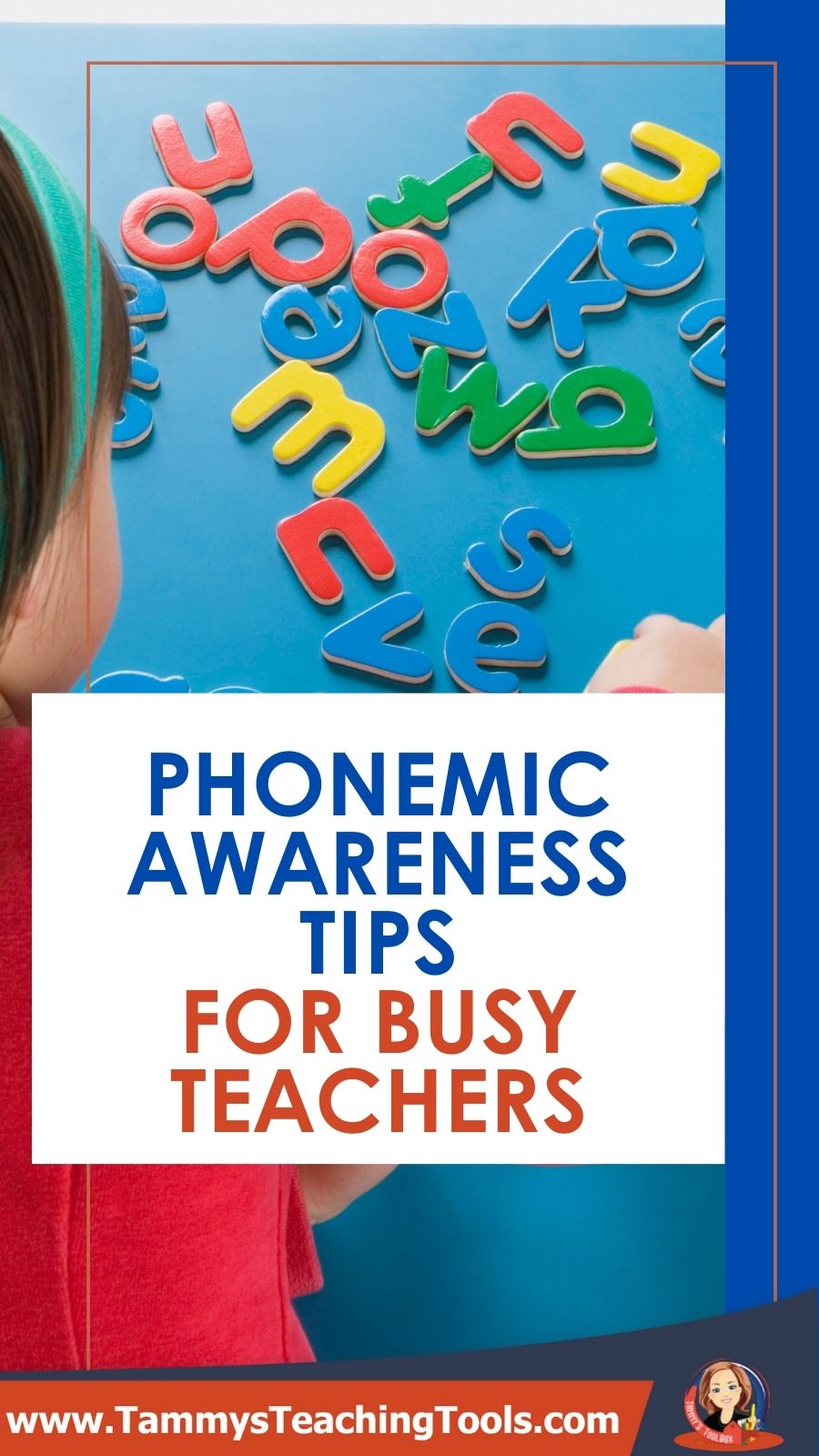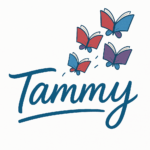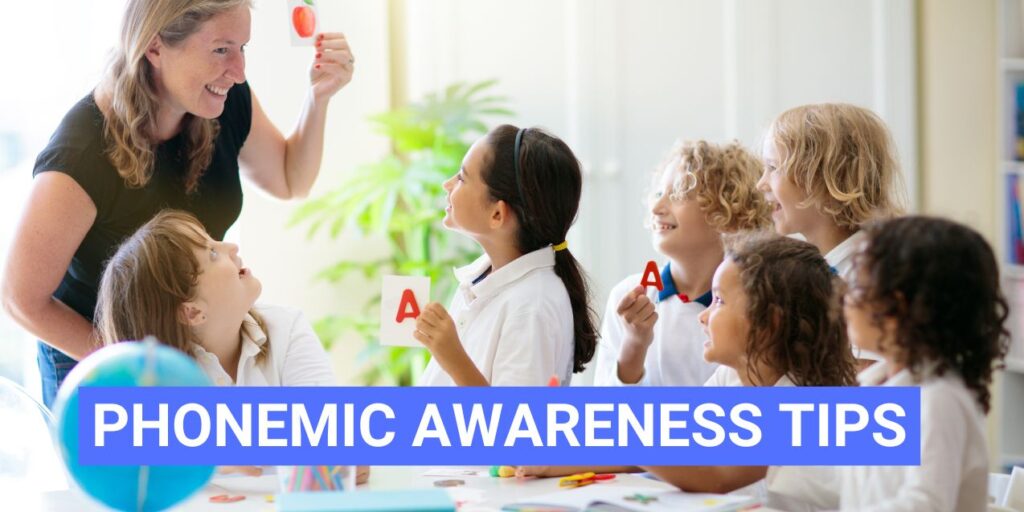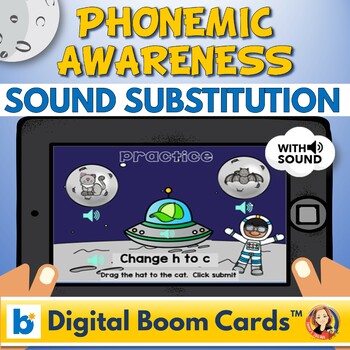Fun & Effective Phonemic Awareness Activities for Young Learners
Did you know phonemic awareness is one of the most significant predictors of future reading success? It’s the secret ingredient that helps young children break the code of written language! Simply put, phonemic awareness is the ability to hear, identify, and play with individual sounds (phonemes) in words—a must-have skill for budding readers.
This post will explore engaging, hands-on strategies for building phonemic awareness in K-3 students. From playful blending and segmenting activities to interactive sound manipulation games, you’ll discover fun and effective ways to help your little learners develop confidence in reading and spelling.

How to Teach Phonemic Awareness Effectively
Phonemic awareness is a critical foundational skill for early literacy. It is the ability to hear, identify, and manipulate individual sounds (phonemes) in spoken words. Research shows that strong phonemic awareness skills in kindergarten and early elementary grades lead to improved reading and spelling abilities.
Why Is Phonemic Awareness Important?
Before children can learn to read, they need to understand that words are made up of sounds. Phonemic awareness helps students:
- Decode words by recognizing sounds and their correspondence to letters.
- Develop spelling skills through sound segmentation.
- Improve reading fluency and comprehension.
Unlike phonics, phonemic awareness does not involve letters or written text—it focuses solely on sounds. Therefore, it is essential to develop these skills through listening and speaking activities.
Key Phonemic Awareness Skills
There are several key skills involved in phonemic awareness instruction:
- Blending – Combining individual sounds to form words (e.g., /c/ /a/ /t/ = cat).
- Segmenting – Breaking words into individual sounds (e.g., dog = /d/ /o/ /g/).
- Manipulating Sounds – Adding, deleting, or substituting sounds in words (e.g., changing the /c/ in “cat” to /b/ to make “bat”).
Effective Strategies for Teaching Phonemic Awareness
To teach phonemic awareness effectively, consider using these research-backed strategies:
-
Use Oral Activities
Since phonemic awareness is an auditory skill, activities should be primarily verbal. Encourage students to play with sounds through rhyming games, syllable clapping, and oral blending exercises.
-
Incorporate Multisensory Approaches
Using a multisensory approach can help reinforce phonemic awareness skills. For example:
- Tapping or Clapping – Have students tap their fingers or clap as they break words into sounds.
- Using Manipulatives – Give students counters or blocks to represent phonemes in a word.
- Air Writing – Have students trace letter shapes in the air while saying the sounds.
Sound Hop & Build Activities
Objective: Strengthen phonemic awareness using movement, touch, and visual cues.
Materials:
- Floor dots or hopscotch squares (for tapping/clapping)
- Small counters, blocks, or pom-poms (for manipulatives)
- Whiteboards or imaginary air writing space
How to Play:
- Tapping & Clapping – Say a word aloud (e.g., “cat”) and have students clap or tap their fingers for each phoneme (/c/ – /a/ – /t/).
- Using Manipulatives – Give each student three counters. As they say each sound, they slide a counter forward to physically represent each phoneme.
- Air Writing – After identifying the sounds, have students “write” the letters in the air while saying them aloud to reinforce the connection between sounds and letters.
- Bonus: Sound Hop! – Place three floor dots in front of each student. As they say each sound, they hop from dot to dot, reinforcing segmentation through movement.
✨ Why it Works: This activity keeps kids engaged by integrating movement, touch, and visual learning—perfect for diverse learners and wiggly little ones.
-
Make It Fun with Games
Young children learn best through play, so incorporating phonemic awareness games can make learning engaging. Try these fun activities:
- “I Spy” with Sounds – Say, “I spy something that starts with /s/” and have students guess the object.
- Sound Substitution Game – Ask students to change one sound in a word to make a new word (e.g., “Can you change the /m/ in ‘map’ to /t/?”).
- Silly Sentences – Encourage students to create sentences with words that have the same beginning sound (e.g., “Silly snakes slither slowly”).
-
Practice Blending and Segmenting Daily
Blending and segmenting are essential for reading and spelling success. Use these activities to practice:
- Blending Train – Say the individual sounds of a word slowly and have students “ride the train” by blending them together.
- Stretch It Out – Have students stretch a word by saying each sound slowly before snapping it back together.
- Elkonin Boxes – Draw boxes for each sound in a word and have students place counters in each box as they say the sound.
-
Scaffold Instruction Based on Student Needs
Not all students develop phonemic awareness at the same rate. Assess their abilities and provide appropriate support:
- For Beginners: Focus on simple activities like rhyming and identifying the first sound in words.
- For Intermediate Learners: Move on to blending and segmenting sounds.
- For Advanced Learners: Introduce sound substitution and deletion challenges.
Final Thoughts
Teaching phonemic awareness effectively is one of the most important steps in developing strong readers. By incorporating engaging, multisensory activities and scaffolding instruction to meet student needs, teachers can help young learners build a solid foundation for reading success.
Need more information? Consider exploring the following websites:
♦ Reading Rockets: This platform offers a comprehensive overview of phonological and phonemic awareness, including self-paced learning modules, instructional strategies, and developmental milestones.
♦ UF Literacy Institute: Hosted by the University of Florida, this site provides instructional activities aimed at promoting phonemic awareness skills, essential for developing decoding abilities.
Check out all the phonemic awareness activities at Tammy’s Toolbox. Here are just a few.
Blending and Segmenting CVC Words and Digraphs Task Cards/Center Activities
Letter Sound Switching Digital Boom Task Cards – Sound Substitution
✨✨One last thing before you leave, check out these posts and my free resource library for phonemic awareness activities you can print and use today!✨✨
The Importance of Phonemic Awareness
The Science of Reading: Demystifying How Kids Learn to Read!
Using Nonsense Word Activities Effectively in the Classroom
Happy Teaching,

What are your favorite phonemic awareness activities? Share them in the comments below!





